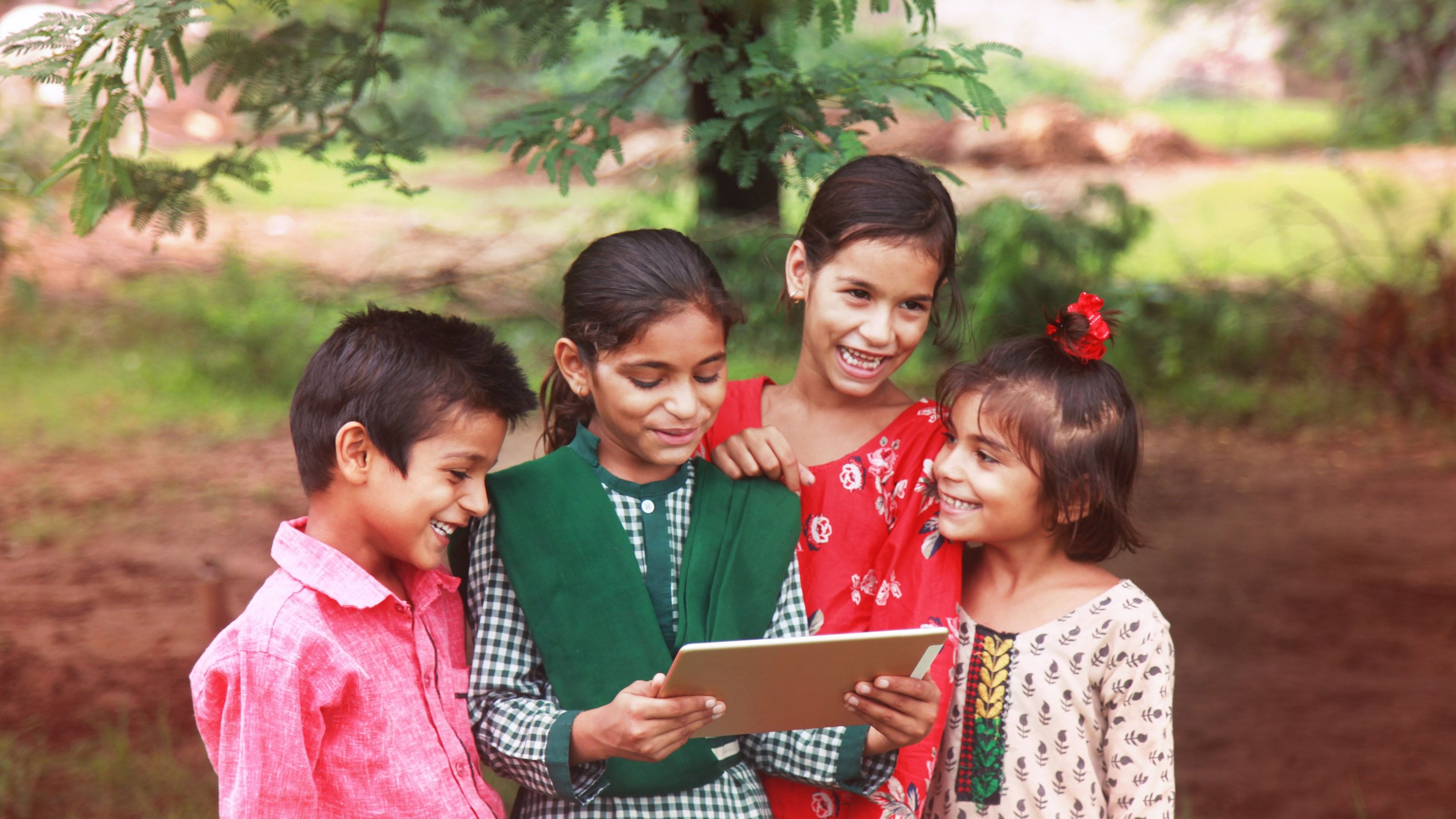
Rural group of children enjoying digital tablet outdoor nature.
Credit: iStock Photo
Experiential learning has become an important part of innovative pedagogical approaches in the Indian education system. It is further reinforced within the National Education Policy. What does experiential learning look like in the sciences? More specifically, what does experiential learning look like in environmental sciences? To answer these questions, I will illustrate with a few examples from my pedagogy within various courses in environmental science.
Teaching environmental science at the undergraduate level in a country like India is challenging. Environmental science requires appreciating a range of ecological contexts that neither educators nor students have. This lacuna is exacerbated by lecture-based learning relying on traditional globally renowned textbooks, which rarely have examples from the Indian subcontinent. In this context, experiential learning has the potential to make the environment more relatable and generate place-based learning.
In his prominent work ‘Experiential learning: Experience as a source of learning and development,’ psychologist David A. Kolb outlines the boundaries of experiential learning as taking place beyond the traditional lecture mode—in internships, field projects, and classroom experiential exercises. What would this look like in environmental science? To understand this further, let’s look at science education for insights. In science education, terms such as ‘tacit knowledge’ and ‘learning by doing’ have surfaced over the last five or six decades.
Here’s an example of how the concept of differentiated vulnerability to climate change is taught to undergraduate students in the classroom using an experiential learning game. When I recently informed my class that women face greater challenges during environmental crises than men, many students challenged me that this couldn’t be true.
I used the vulnerability walk (a game that helps explore the different vulnerabilities within a community and reflects on how adaptation efforts can effectively address these) in the classroom or outdoor settings to unpack the idea that social differences make people vulnerable to risks differently. This simple role-play exercise helps students put themselves in the shoes of a farmer in distress due to crop failure in the Beed district or a woman street vendor experiencing heat stress outdoors in New Delhi.
Learning with games and projects
Experiential learning through games involves the crucial element of play. The play has a central role in mammalian development and learning. Play helps children and adults alike to adapt to new situations, potentially having a role in building problem-solving abilities. I keep a pack of cards and a pair of dice handy while teaching students probability basics in an introductory statistics course. Students find it much easier to solve problems they can see unfold before their eyes over abstract representations of the same in textbooks.
Experiential learning is an important way in which intelligence and competence are built, as well as key aspects of being a citizen, such as community responsibilities and attention to social concerns. Perhaps within science education, we could expand the role of experiential learning to build scientific capability— going beyond competence and scientific understanding to having additional components of sensitivity to society, scientific curiosity and creativity. Paulo Freire famously argued in ‘A Educação como Espanto’ (Education as amazement) that an intense direct experience like a mesmerising sunrise was crucial for learning.
Outdoor activities spark curiosity, creativity and sustained engagement from students. Skills are built with practice, and we learn about birds and trees collaboratively using well-designed citizen science handbooks. For instance, students and faculty monitor our campus’s bird diversity and population with the Campus Bird Count, spearheaded by Bird Count India each year.
Using the Merlin bird ID app to aid in species identification, students learn to tune in to visual signals such as plumage colouration and size and listen attentively to bird songs. Sometimes, the app helps us identify the bird species through its call, and we strain our eyes collectively at the tree canopy to spot the bird’s visual! Student photographers hone their photography skills.
This year, students and staff have joined the Campus Phenology Network, organised by SeasonWatch, and have begun monitoring how trees change across seasons (budding, flowering and fruiting) in about 15-18 individual trees on our campus. This grounded campus-based activity is honing the basic skills of observation and generating curiosity and wonder. Imagine the joy when we collectively learnt that a jackfruit flower is an inflorescence (group of flowers) and looks very unusual to an uninitiated eye!
Experiential learning breathes new life into scientific data on changing bird migration patterns and early flowering of trees with global warming. Environmental knowledge gained by experiential learning is becoming very important as a young generation seeks education in a rapidly changing global environment.
(The author teaches Environmental Science at the School of Liberal Arts and Sciences in a Bengaluru-based college)